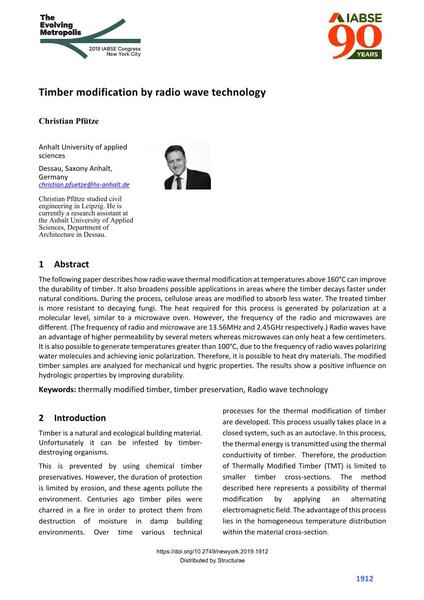Timber modification by radio wave technology

|
|
|||||||||||
Détails bibliographiques
| Auteur(s): |
Christian Pfütze
|
||||
|---|---|---|---|---|---|
| Médium: | papier de conférence | ||||
| Langue(s): | anglais | ||||
| Conférence: | IABSE Congress: The Evolving Metropolis, New York, NY, USA, 4-6 September 2019 | ||||
| Publié dans: | The Evolving Metropolis | ||||
|
|||||
| Page(s): | 1912-1916 | ||||
| Nombre total de pages (du PDF): | 5 | ||||
| DOI: | 10.2749/newyork.2019.1912 | ||||
| Abstrait: |
The following paper describes how radio wave thermal modification at temperatures above 160°C can improve the durability of timber. It also broadens possible applications in areas where the timber decays faster under natural conditions. During the process, cellulose areas are modified to absorb less water. The treated timber is more resistant to decaying fungi. The heat required for this process is generated by polarization at a molecular level, similar to a microwave oven. However, the frequency of the radio and microwaves are different. (The frequency of radio and microwave are 13.56MHz and 2.45GHz respectively.) Radio waves have an advantage of higher permeability by several meters whereas microwaves can only heat a few centimeters. It is also possible to generate temperatures greater than 100°C, due to the frequency of radio waves polarizing water molecules and achieving ionic polarization. Therefore, it is possible to heat dry materials. The modified timber samples are analyzed for mechanical und hygric properties. The results show a positive influence on hydrologic properties by improving durability. |
||||
